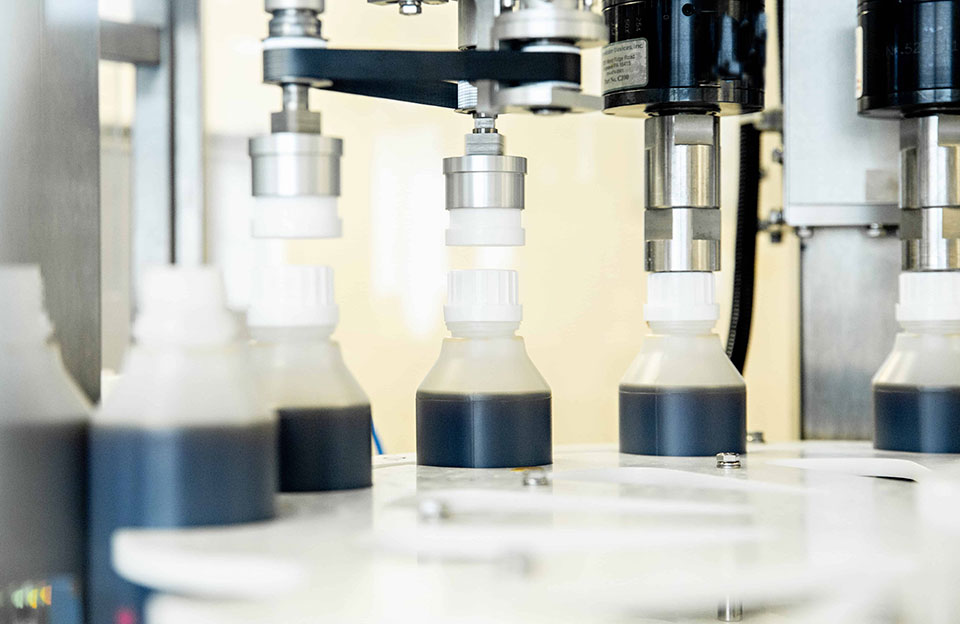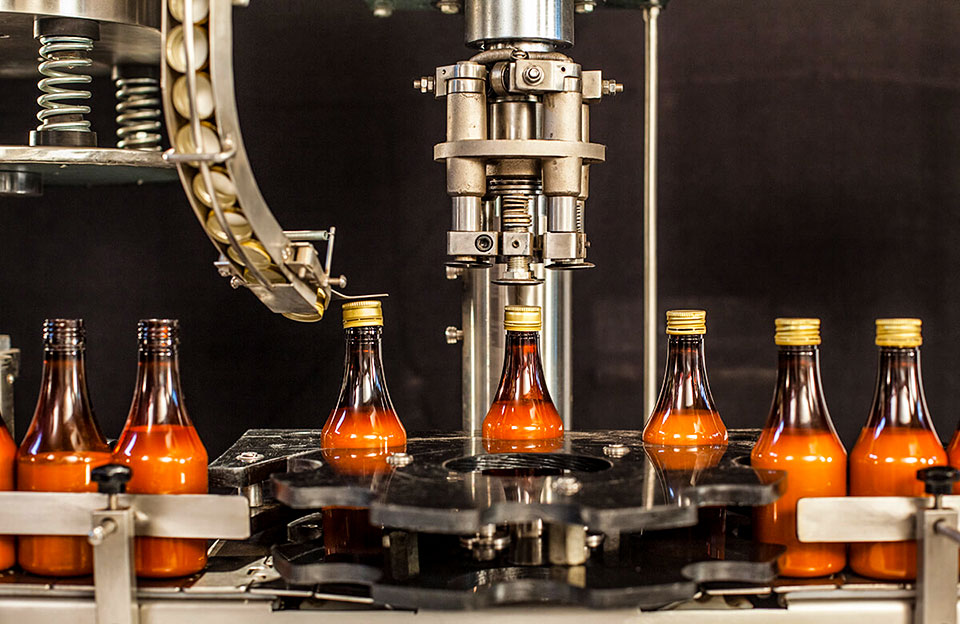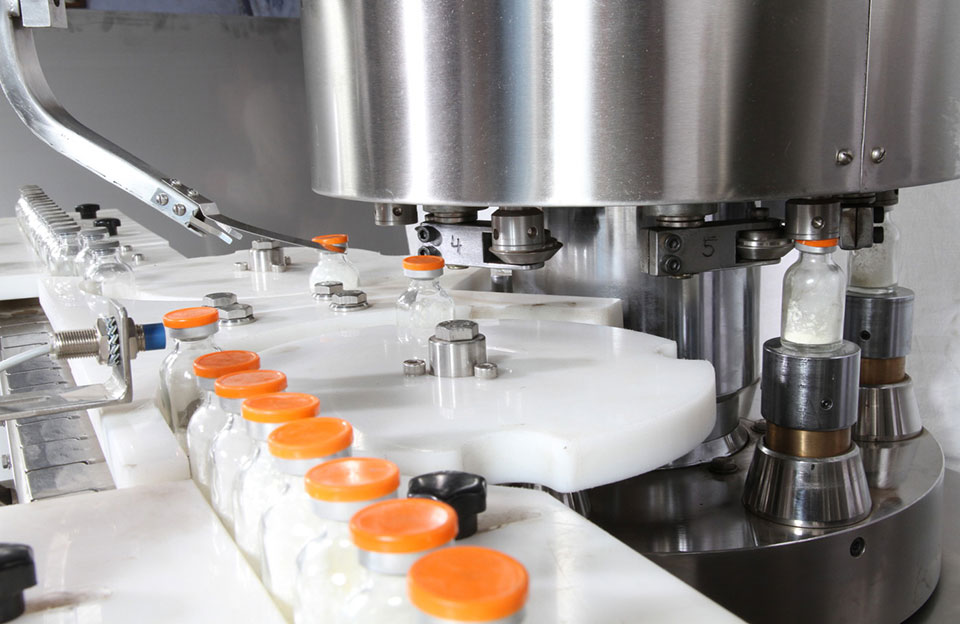Automation technology’s growing importance in manufacturing increases production efficiency and improves product quality and consistency. Automation technology can precisely control the production process, reducing the chance of human intervention and reducing the risk of human error and loss. In addition, the automation system can monitor the production environment in real-time and make instant adjustments based on the data, thereby improving the flexibility and adaptability of the production line.
In the pharmaceutical, food, beverage, and other industries, capping machines, as key equipment, play an important role in the product packaging process. The application of automation technology in capping machines provides key support for the efficient operation of the production line.
Key Role of Capping Machine in Packaging and Production Line
Capping machines play a key role in packaging and production lines, and their role goes far beyond just assembling caps. The following are some key roles of capping machines in packaging and production lines:
- Guarantee of Packaging Quality: The capping machine ensures that the cap of each container is installed correctly and stably, thus ensuring the packaging quality of the product. Correct packaging is an important factor in ensuring that the product does not leak and is not contaminated during transportation, storage, and use.
- Improvement of Production Efficiency: The capping machine can automatically complete the assembly process of bottle caps without manual intervention. This significantly improves the efficiency of the production line, speeds up production, and reduces the waiting time and instability of manual operations.
- Consistency and Standardization: The automatic capping machine can ensure that each bottle cap is tightened correctly and consistently, eliminating the possible differences and inconsistencies in manual operations and maintaining the standardization and consistency of products.
- Reduction of Labor Costs: The automated capping machine reduces the dependence on the workforce, reduces labor costs, and also reduces errors and accidents that manual operations may cause.
- Fluency of the Production Line: As a key link in the production line, the capping machine ensures the continuity and smoothness of the production process. Its automated features ensure a seamless transition of products from assembly to packaging.
- Data Collection and Monitoring: Modern capping machines usually have sensors and monitoring systems that collect operational data in real-time. This data can be used to monitor equipment status, predict maintenance needs, and enable continuous optimization of production processes.
- Flexibility of Production Line: The automated capping machine can be configured and adjusted according to different sizes, types, and requirements of products, thus providing flexibility and adaptability to the production line.
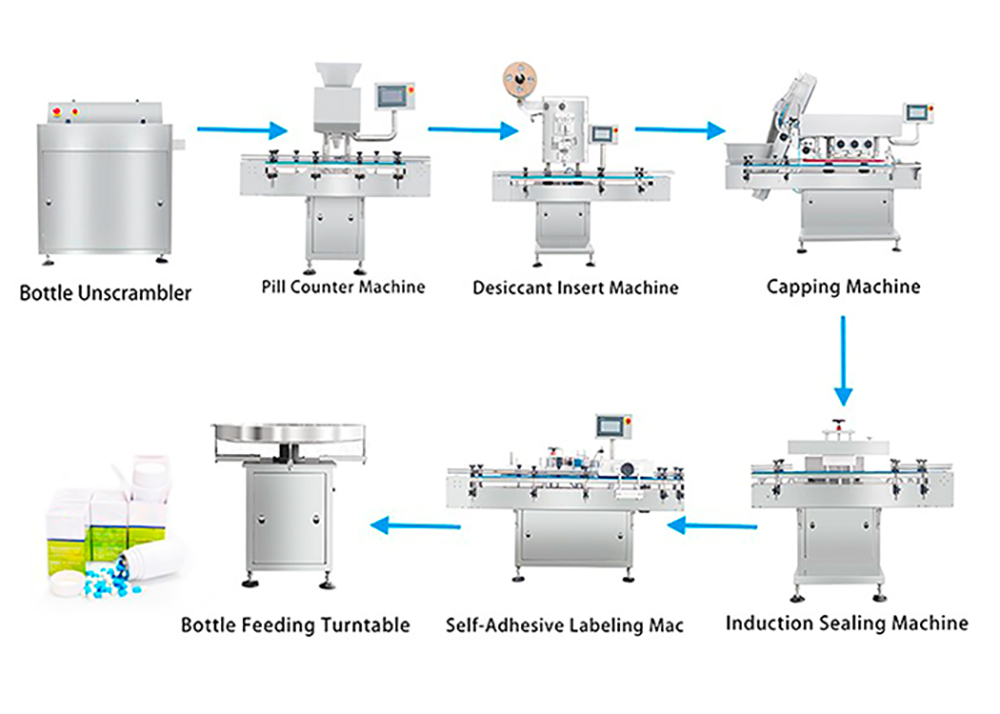
Capping Machine in Packaging and Production Line
Traditional Manual Operations VS Automation Technology
There is a significant contrast between traditional manual operations and modern automation technologies in manufacturing. Here are some key differences and comparisons between traditional manual operations and automated technologies:
- Traditional Manual Operation:
- Human Dependency: Traditional manual operations require a lot of human involvement, requiring physical manipulation, monitoring, and adjustments by the operator.
- Human Variability: There may be differences in operations between different operators, resulting in inconsistent product consistency and quality.
- Limited Efficiency: The efficiency of manual operation is affected by human physiological and psychological factors. The operation speed may be limited, and the production efficiency is low.
- Labor Intensive: Manual operations may require long hours of repetitive work by the operator, leading to fatigue and health problems.
- Human Error: Human operation is prone to errors, such as assembly errors, incomplete assembly, etc., which increases the risk of product quality.
- Poor Adaptability: Manual operations have limited adaptability when faced with different product types, sizes, and needs.
- Automation Technology:
- Reduced Workforce: Automation technology reduces dependence on the workforce, lowers costs, and eliminates the risk of workforce shortages.
- Consistency and Accuracy: Automated systems can maintain highly consistent operations, reducing human variability and improving product quality and stability.
- Efficient Production: Automated equipment can operate at a constant speed and accuracy, greatly improving production efficiency.
- Reduced Labor Intensity: Automation reduces the physical burden on operators, freeing them from repetitive tasks.
- Reduced Error Rates: Automated equipment performs tasks with little human error, reducing quality issues in production.
- High Adaptability: The automation system can be configured and adjusted according to different products and requirements, realizing the flexibility and adaptability of the production line.
Application of Automation Technology in Capping Machines
The application of automation technology in capping machines is extensive and far-reaching. They have greatly improved the bottle cap assembly process, production efficiency, and product quality. The following are the main applications of automation technology in capping machines:
- Sensor Technology: Sensors detect the cap’s position, orientation, and state. With accurate position information, the capping machine can assemble the bottle caps correctly, ensuring that each bottle cap can be correctly installed on the bottle mouth.
- Machine Vision System: The machine vision system detects the position and status of the bottle cap through the camera and image processing software. It can judge whether the bottle cap is assembled correctly and whether there is any defect in realizing automatic quality control.
- Automatic Control System: The automatic control system manages the operation of the capping machine. It can automatically adjust the operation of the capping machine according to preset parameters, ensuring proper tightening force, speed, and direction of rotation to suit different cap types and sizes.
- Air Pressure Control Technology: By controlling the air pressure, the capping machine can achieve precise tightening force to ensure that each bottle cap is correctly and stably installed on the bottle mouth.
- Automatic Safety System: Automatic capping machines are usually equipped with safety systems, such as emergency stop buttons, light grid sensors, etc., to ensure the safety of operators and equipment.
- Data Collection and Analysis: Automation technology can collect operational data, such as production speed, success rate, etc. This data can be used to monitor equipment status, optimize operations, and predict maintenance needs.
- Programming Logic Control (PLC): PLC system programming controls the operation of the capping machine, monitors the sensor feedback, and makes real-time adjustments as needed to achieve accurate bottle cap assembly.
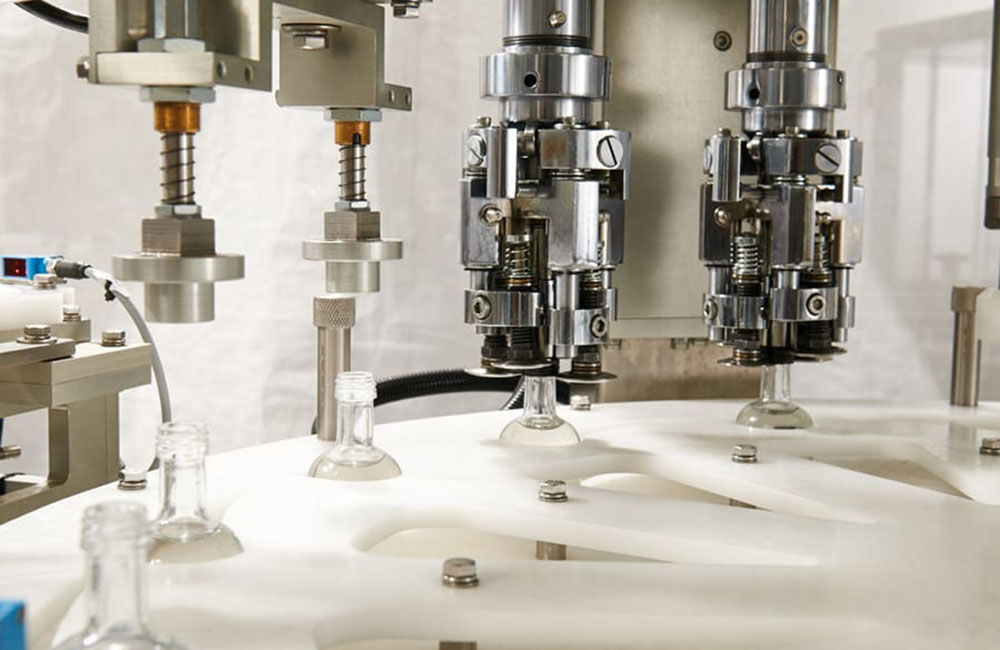
Automation Technology in Capping Machines
Conclusion
The application of automation technology in capping machines is extremely important. The capping machine can realize high-speed and high-precision bottle cap assembly through the automatic control system. It can effectively improve production efficiency, reduce human errors, ensure the consistency of product quality, and reduce labor costs. Automation technology in capping machines also offers the potential for data-driven production optimization. Automation technology in capping machines enables enterprises to maintain competitiveness in a highly competitive market and achieve sustainable production and growth.
